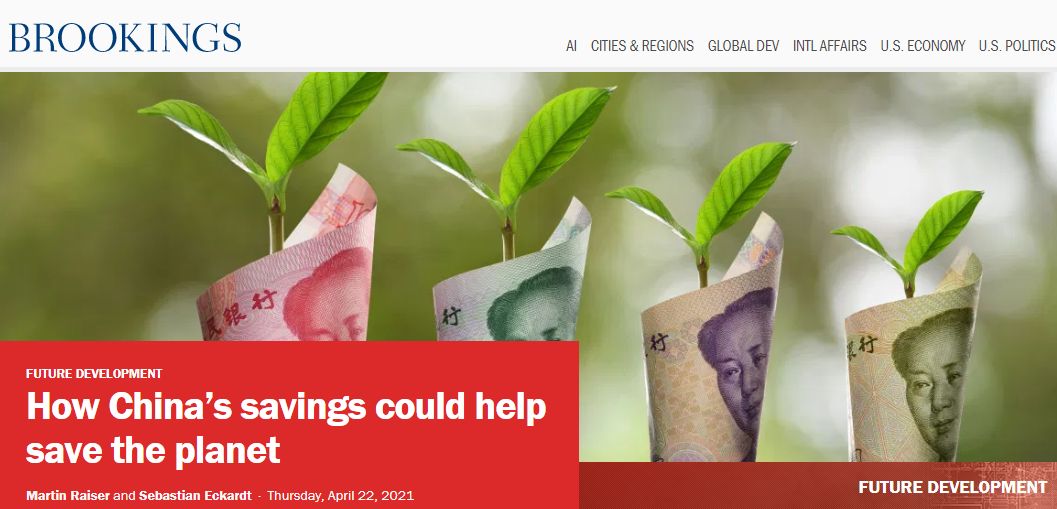
A mother teaches her daughter to learn to respect the nature. /Getty
A mother teaches her daughter to learn to respect the nature. /Getty
Editor's note: Djoomart Otorbaev is the former prime minister of the Kyrgyz Republic, non-resident senior fellow of Chongyang Institute for Financial Studies, Renmin University of China, and a member of Nizami Ganjavi International Center. This is the second piece of his series on the future of sovereign debt restructuring. The article reflects the author's opinions, and not necessarily those of CGTN.
Currently, the world is facing a few global problems. Among the key ones, two stand out: the fight against poverty, especially in low-income countries, and the fight against climate change.
On April 8, the International Monetary Fund (IMF), through its managing director, Kristalina Georgieva, announced that it had begun developing a model for linking the debt management of low-income countries to the efforts of these countries in the fight against climate change. The presentation of the new concept will likely take place at the COP26 Climate Change Summit in November in Glasgow, UK.
Given that China is the largest creditor to developing countries and fully committed to combating climate change, China's participation will be essential in preparing all necessary procedures at the earliest period of such work.
Currently, the country is making large-scale investments in the development of its domestic green economy. Chinese Premier Li Keqiang highlighted the importance of green finance development as a key government priority during the Two Sessions, the annual meetings of China's top political bodies.
The first quarter of this year saw a landmark event: China overtook the U.S. in issuing global green bonds. Between January and March, Chinese issuers doled out $15.7 billion in bonds to finance green projects such as clean and renewable energy. According to the official data, the volume of those bonds, mainly denominated in yuan, almost quadrupled from a year earlier.
However, analysts at the China International Capital Corporation estimate that to achieve net-zero emissions, the country will need an enormous 140 trillion yuan ($21.8 trillion) worth of green investment over the next 40 years, 40 percent of which requires equity and bond financing. At stake is Beijing's goal of achieving zero net carbon emissions by 2060.
Not only does China account for nearly a third of the world's greenhouse gas emissions, but its financial system is also the second-largest in the world. Considering that China has already accumulated assets worth almost $50 trillion in the banking system alone, achieving such goals seems realistic.
Meanwhile, according to data from China's central bank, outstanding green loans from Chinese banks at the end of last year totaled nearly 12 trillion yuan ($1.9 trillion), already making the country the most extensive green loan portfolio in the world. Despite this, green loans and bonds represent only a tiny fraction of China's financial system, corresponding to less than 7 percent and 1 percent of its total, respectively.

Screenshot of the article "How China's savings could help save the planet," on the Brookings Institution's website.
Screenshot of the article "How China's savings could help save the planet," on the Brookings Institution's website.
Just as crucial as greening China's domestic financial markets is the issue of what kind of investment China is making overseas. Currently, the share of financing for renewable energy has started to grow impressively and in the past year exceeded investments related to fossil fuels industries. The recently adopted Climate Finance Guidelines state that China will "regulate offshore investment and finance," indicating a shift towards environmental standards in the provision of foreign aid. As part of this initiative, China is likely to limit funding for overseas energy projects using fossil fuels.
International financial institutions like the IMF and the World Bank will play an essential role in defining specific standard "rules of the game" in this area. European bilateral climate lenders are likely to join any such deal as well. But due to the sheer size of outstanding loans to the developing world, China should play the most critical role.
The numbers speak for themselves. For example, by January 2021, 46 low-income countries had indicated their willingness to participate in the Debt Service Suspension Initiative (DSSI) in concrete terms. China is their main creditor of about $8.4 billion, 68 percent of these countries' total official debt payments scheduled for 2020. Angola, Myanmar, Cambodia and Kyrgyzstan are just a few countries that have received significant loans from China in recent years.
China has a unique opportunity to demonstrate its commitment to the world as a leading power by participating in green debt restructuring. It would also reinforce China's domestic commitment to carbon neutrality by 2060 and strengthen its image as the world's leader in the fight against climate change.
China is unlikely to do it all on its own. The country has traditionally supported key initiatives like this in the context of broader multilateral efforts, as it has always advocated multilateralism.
Thus, an essential stage of work has begun, when, together with the International Monetary Fund (IMF) and the World Bank (WB), a few major powers, with the obligatory involvement of China, could take the initiative and begin to develop a detailed green restructuring program.
Since the debt-for-sustainable development process is likely to be in place for a long time and given the uniqueness of this process, I believe that China should create a dedicated government agency responsible for preparing, designing, implementing and following up the entire process.
In coordination with multilateral development agencies and other bilateral lenders, such an internationally oriented specialized agency could undertake negotiations with the governments of debtor countries, state and non-state environmental organizations, and Chinese credit organizations to structure all processes. It is impossible to build a green economy in a single country. Humanity must understand how small and fragile our planet is and finally start to act together.
(If you want to contribute and have specific expertise, please contact us at opinions@cgtn.com.)

